This excellent photo of a Neotibicen dorsatus (formerly T. dorsata) was taken in Oklahoma by Vic Fazio.

Genera of cicadas.
This excellent photo of a Neotibicen dorsatus (formerly T. dorsata) was taken in Oklahoma by Vic Fazio.

Paul Krombholz has discovered some interesting variations in the Tibicen davisi cicadas. I’m quoting Paul’s email in its entirety below.
Here is the composite photo showing variation in Tibicen davisi. The
additional one I wanted to add turned out not to be as dark as I thought,
but it has a different pattern. All these came from the trees in my
backyard in central Mississippi this season. Colors on the dorsal (top)
side vary from dark brown to green. Perhaps the most typical is the “olive”
one in the middle. On the ventral (bottom) side, the black abdominal stripe
varies from very wide to non-existent. Variation in the size of the black
abdominal stripe is not related to the color on the dorsal side, as I have
seen absolutely no abdominal stripe on both a greenish one and a very dark
brown one.Davis described a variety of T. davisi—T davisi var. hardeni—which has
little or no abdominal stripe. However, it also has darkening next to the
wing veins of the seven marginal cells as in T. superbus
(http://static.flickr.com/31/60751246_f60d00e2a9.jpg?v=0), While its upper
side is “less rusty” than the typical T. davisi, its underside is also
green. (Dr. Alan Sanborn, personal communication). Since my examples only
vary as to the “greenness” of the upper side and to the size of the
abdominal stripe, none of them fit completely the description of var.
hardeni. If anyone finds a T. davisi that meets the description of var.
hardeni, I think Dr. Sanborn would like to know about it.
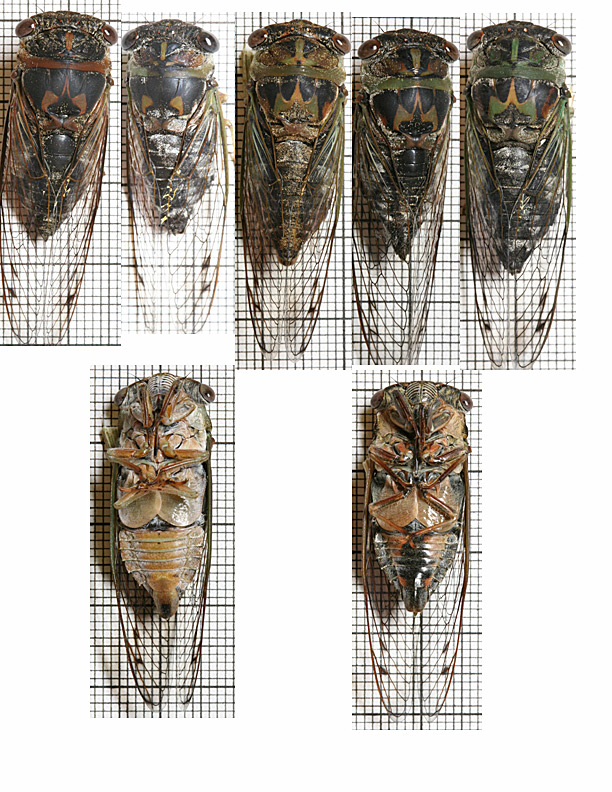
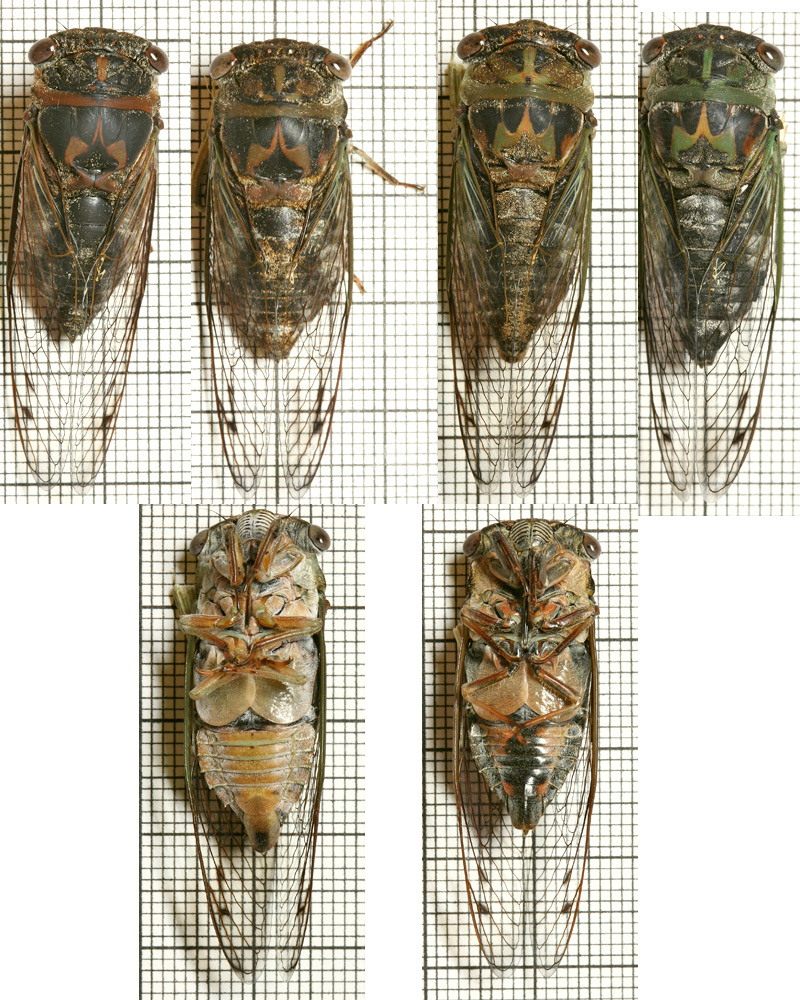
View other parts of this set: part 2, part 3, and part 4.
Adam Fleishman has captured some amazing photos of Cacama valvata cicadas. They were taken in Tucson, AZ. Elevation 2,450 ft.
See more of Adam’s work at his photography web site: Cometmoth Sight and Sound.
Ovipositing female:

Female:

Female:
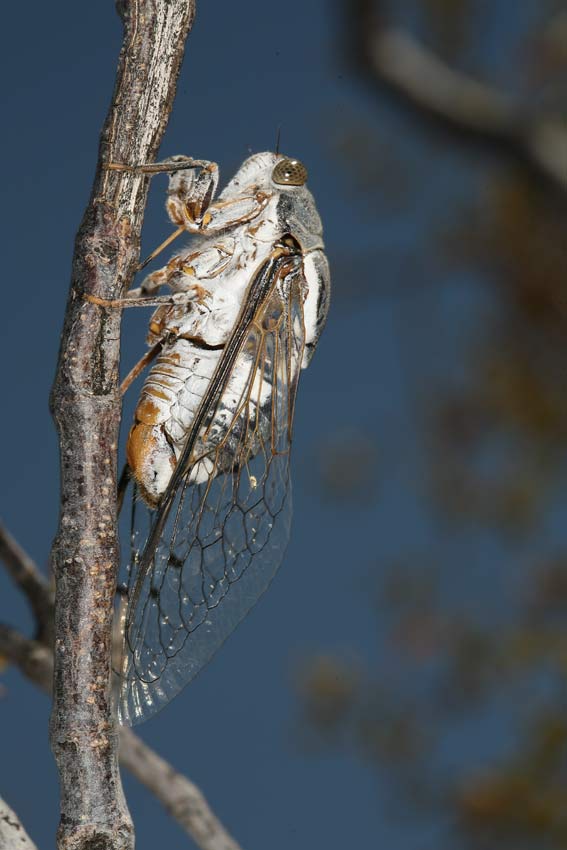
Molted cicada skin (exuvia):
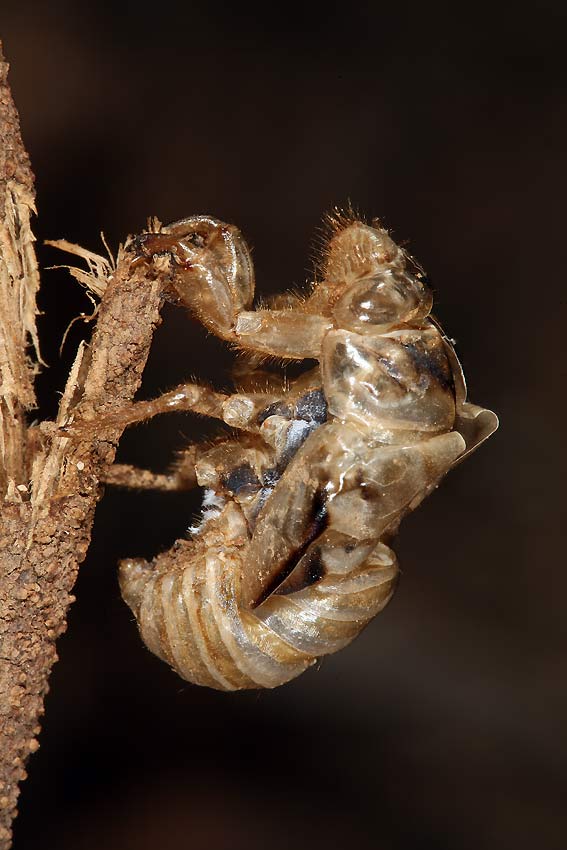
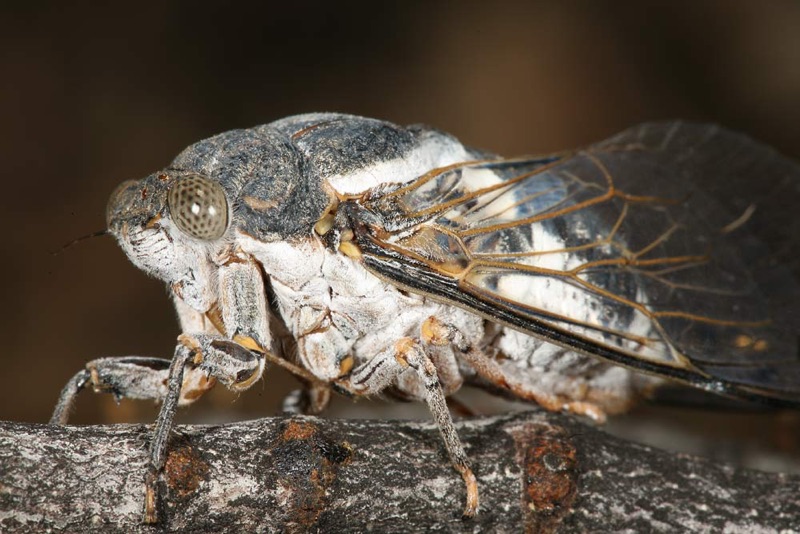
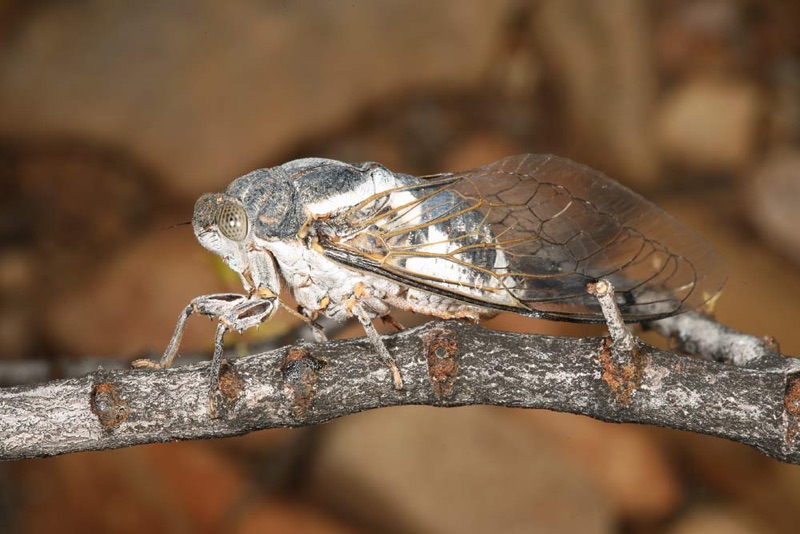
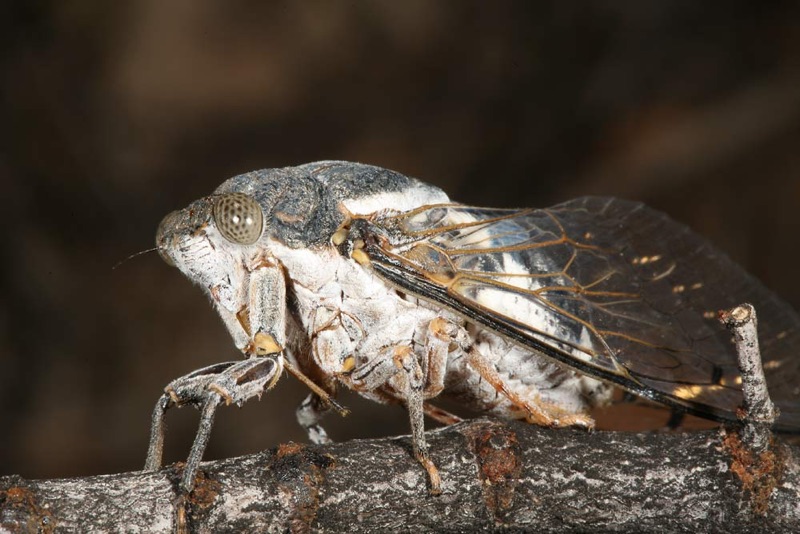
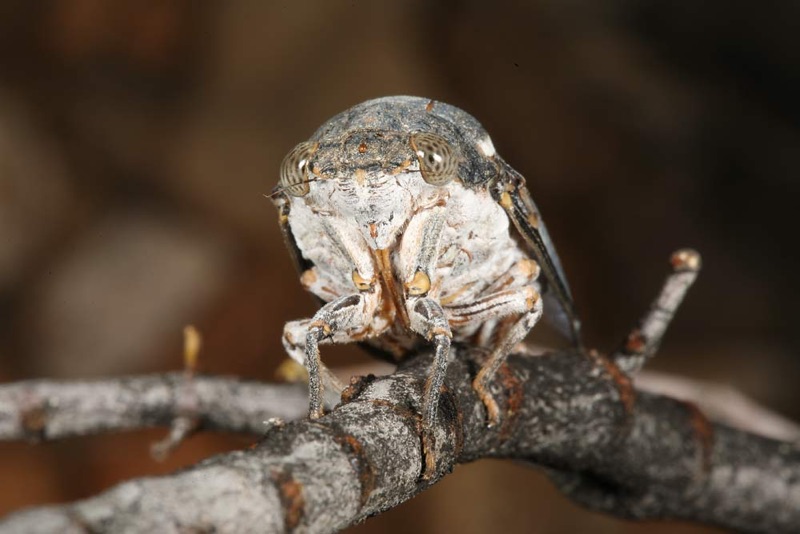
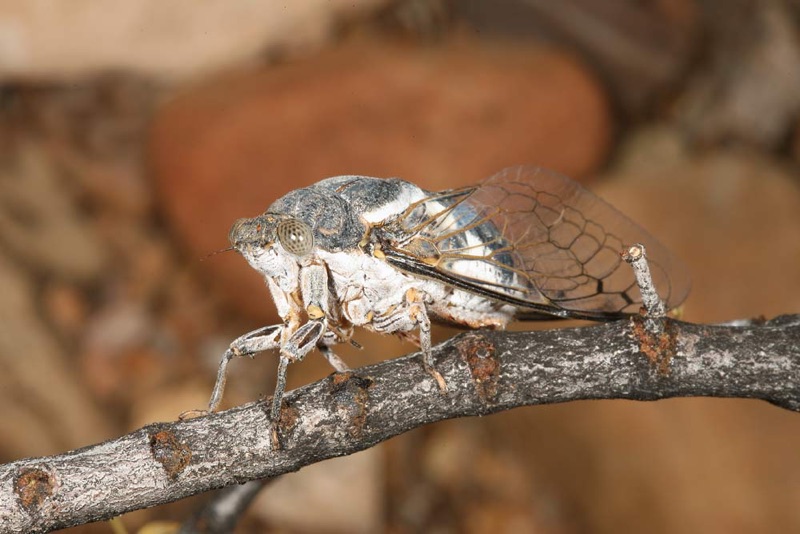
Cicada researcher Kathy Hill took this unbelievable photo of 18 different USA Neotibicen & Megatibicen specimens, plus a Quesada gigas (upper right) for comparison.
Click/tap the image for a much larger version. Contact Insect Singers for more information about the image.
I just took a photo of all the “eastern USA” Tibicens except
latifasciata, which we haven’t got yet (I didn’t include the “little
western” Tibicens like T. texana that are more centrally located
either). But I did also add T. duryi from the west coast and Q.
gigas, just for comparison.I just wanted to prove that auletes IS the biggest USA cicada 🙂
Note that the these cicadas were reorganized into two new genera: Megatibicen (larger USA Tibicen) and Neotibicen (smaller USA Tibicen) since this original announcement in 2006.
* Note as of 2023 the name of this cicada has changed to Megatibicen grossus. You can also call it a Northern Dusk-Signing Cicada. Cicada names change a lot.
Here’s a great photo of a Neotibicen shedding its skin from Chris Millette.
Thought you might like to share my photo of a dog day cicada that I
made in Hummelstown, Pennsylvania last week.

Update: Gerry from Massachusetts Cicadas site said that this is a Diceroprocta semicinta, not an apache.
Kathy Hill had this to say
It could be apache or it might be semicincta, depending on where he got it from. But from the pics/specimens we have I think it does look more like apache. We’ve never noticed one with red eyes either but then Dave and I have only collected apache and semicincta once in 2003, so we haven’t seen very many. I don’t know of any other Diceroproctas that it could be. Apache/semicincta are very common in parts of Arizona. I think they are parapatric.
Bill Sheridan has contributed this excellent photo of an Apache cicada, often confused with Magicicadas because of the red eyes and black body.

The giant cicada, Quesada gigas, has returned to Texas after 50 years!
Here’s a link:
Giant Cicada / Chicharra Grande
Thanks to Roy Troutman and Mike Quinn.
Bonus:
In a few weeks you might see some Magicicada stragglers in areas that saw the Brood X emergence back in 2004. If you see any, let us know.
Update: some exciting news in the comments (before I accidentally deleted the original article):
Our 2006 straggler hunt has been very successful— much more successful than our 2005 Brood XI hunt.
Our group found M. septendecim (XIII), M. tredecassini (XIX), M. tredecim, M. neotredecim, M. tredecassini, and M. tredecula (XXIII), and unidentified nymphal skins, as well as a possible M. cassini (X) straggler— all on a 3-day Midwestern trip. Although most sightings consisted of isolated or small numbers of individuals, two emergences— one at Moody Cemetary in Greene-Sullivan State Forest, Indiana (mostly M. neotredecim), and one at the Vectren Energy plant entrance, near Yankeetown (east of Evansville) IN (mostly M. tredecassini) were substantial enough that there were periods of continuous calling. Not bad for an “off” year!
Complete records will be incorporated into the Magicicada database on Cicada Central as soon as some server issues are solved. If you have records that you’d like to put in the database, send the details (species present, approximate numbers of individuals), the complete locality info (including lat. and lon. if you have it), the date, and your complete name to me at the University of Connecticut (email is just firstname.lastname@uconn.edu).
John Cooley

This photo was taken on May 28th, in Carlsbad, CA by Rebecca. Thanks Rebecca!
Originally I had this labeled as O. rimosa, but it is not.

We have four new Roy Troutman galleries of restored images from the 1980’s and early 1990’s!
NEW! Roy Troutman’s Cicada Photos. Assorted cicadas photos from the 1980s!
NEW! Roy Troutman’s Cicada Photos. Brood X photos from 1987 and 1988
NEW! Roy Troutman’s Cicada Photos. Brood XIV cicada photos from 1990-91